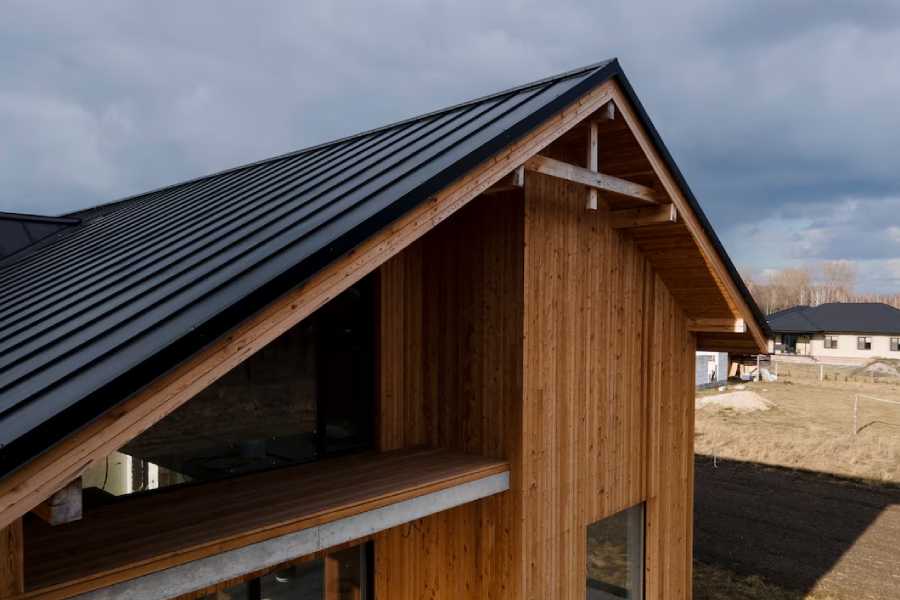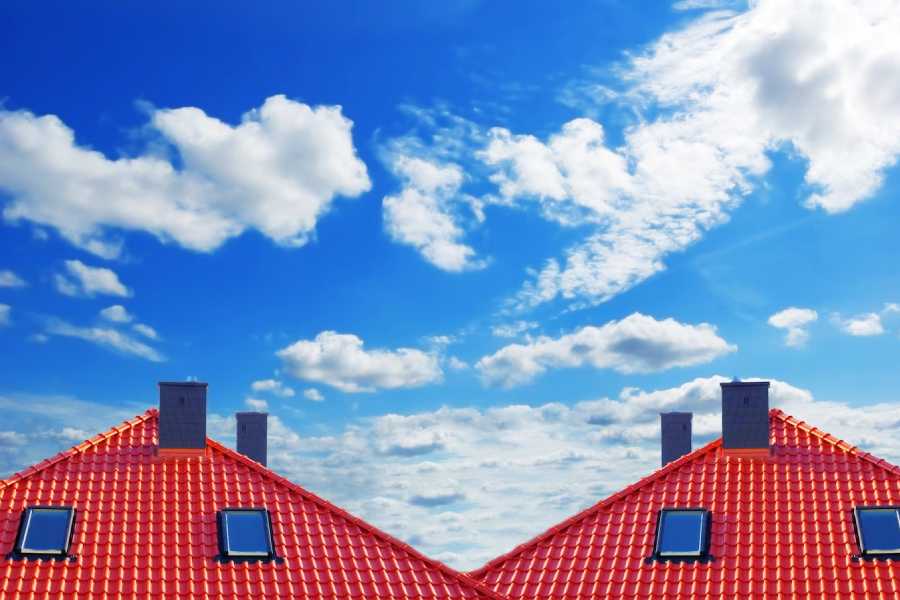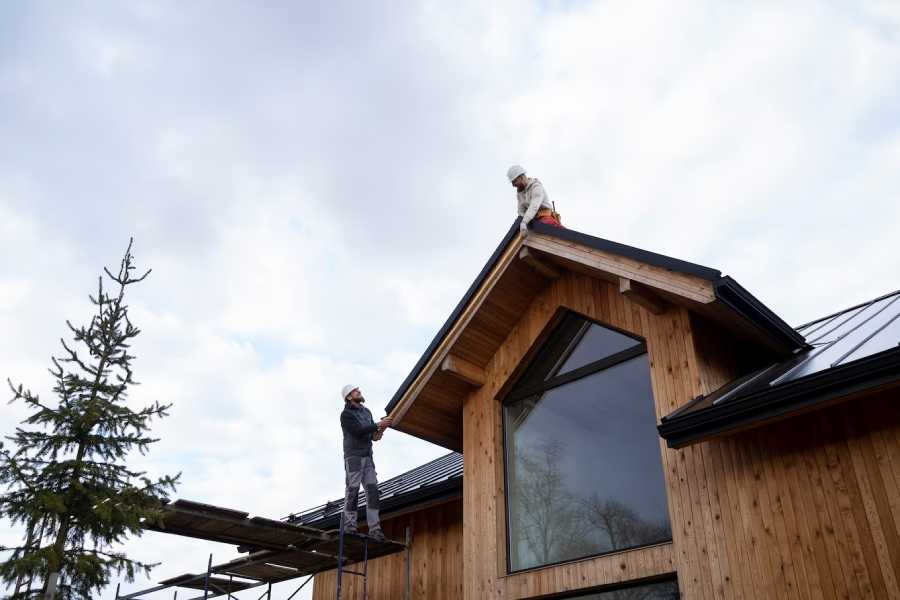- Free Estimates

When it comes to ensuring the longevity and durability of your home, a high-quality roof installation in Peabody, MA, is paramount. In Peabody, MA, where the weather can be unpredictable, having a well-installed roof is essential to protect your property from the elements. Skilled local roofing companies in Peabody, MA, employ a range of techniques to deliver outstanding results.
In this blog post, we will explore ten techniques used by the finest roofers when undertaking a roof installation in Peabody, MA, providing you with insights into the craftsmanship and expertise that goes into creating a robust and reliable roof.
A comprehensive roof inspection and assessment is an essential first step undertaken by top roofers in Peabody, MA, before initiating any roofing project. This meticulous process involves a detailed examination of the current condition of the roof, enabling the roofers to identify any existing issues that need to be addressed before proceeding with the roof installation in Peabody, MA.
During the inspection, experienced roofers carefully examine the roof structure, including the decking, support beams, and rafters, to ensure their integrity and stability. They look for signs of damage, such as rot, decay, or water infiltration, which can compromise the overall structure of the roof. Any underlying issues are promptly identified and addressed to establish a solid foundation for the new roof installation in Peabody, MA.
Proper ventilation and insulation are crucial elements of roof installation in Peabody, MA, where the climate fluctuates between humid summers and cold winters. Expert roofers understand the significance of these factors in maintaining a well-functioning and energy-efficient roofing system.
Ventilation plays a vital role in preventing moisture buildup within the attic or roof space. Without adequate ventilation, a roof installation in Peabody, MA, may fail in the long run as trapped moisture can lead to the growth of mold, mildew, and rot, causing damage to the roof structure and compromising indoor air quality. Expert roofers employ various ventilation techniques to ensure proper airflow, allowing moisture to escape and reducing the risk of structural deterioration.
Additionally, roofers pay attention to the insulation of the roof to enhance energy efficiency and thermal comfort within the home. Adequate insulation acts as a barrier, minimizing heat loss during the winter and heat gain during the summer. This helps regulate indoor temperatures and reduces the workload on heating and cooling systems, leading to energy savings.
A successful roof installation in Peabody, MA, cannot be achieved without selecting the best roofing materials, and the finest roofers in Peabody, MA, possess extensive knowledge about various options available in the market. They understand that the choice of roofing material directly influences the performance, durability, and aesthetic appeal of the roof.
Roof installers utilize a variety of roofing materials based on their characteristics, durability, aesthetic appeal, and suitability for different climates. Here are some common types of roofing materials used by roof installers:
Accurate roof measurements are crucial for a successful roof installation in Peabody, MA. Experienced roofers in Peabody, MA, utilize advanced techniques and tools to measure the roof dimensions precisely. This meticulous approach ensures that the new roof fits perfectly and eliminates the risk of leaks or structural issues.
Below are some factors considered by roofers when conducting roof measurements to ensure accuracy and a successful roof installation in Peabody, MA:

A roof installation in Peabody, MA, normally involves the placement of flashing in suitable areas. Flashing is a thin, waterproof material typically made of metal, such as aluminum or galvanized steel. Its purpose is to direct water away from critical areas where the roof’s surface is interrupted or meets other structures. The primary function of flashing is to create a barrier that prevents water from seeping into the underlying layers of the roof and causing damage.
Expert roofers in Peabody, MA, carefully evaluate the roof’s design and identify areas where flashing is necessary. These areas commonly include roof valleys, where two roof slopes intersect and create a channel for water runoff. Roofers install flashing in valleys to ensure that water is effectively directed away from this vulnerable area.
A roof installation in Peabody, MA, always considers the underlayment of the roofing structure. Underlayment is a layer of waterproof material placed directly on the roof deck, beneath the primary roofing material such as shingles, tiles, or metal panels. It acts as a secondary line of defense against water intrusion, providing an extra layer of protection in case of any leaks or damage to the outer roofing material.
Expert roofers in Peabody, MA, carefully select underlayment materials based on their performance characteristics, such as water resistance, durability, and breathability. Common types of underlayment materials include asphalt-saturated felt, synthetic materials like synthetic underlayment, and rubberized asphalt membranes. These materials offer excellent waterproofing properties and help prevent water from seeping into the roof structure.
Experienced roofers employ efficient techniques when doing a roof installation in Peabody, MA. They work diligently and with precision, ensuring that every shingle, tile, or metal panel is installed correctly. Here are some common roofing techniques for roof installation in Peabody, MA:
Roofing accessories such as gutters, downspouts, and ridge vents play a crucial role in maintaining the overall integrity of the roof. Skilled roofers in Peabody, MA, pay attention to detail when installing these accessories, ensuring they are properly aligned, securely fastened, and seamlessly integrated with the roofing system. These accessories for roof installation in Peabody, MA, include:
Strict adherence to building codes and regulations is a fundamental principle followed by the finest roofers in Peabody, MA. They possess in-depth knowledge of the local building codes and regulations established by the relevant authorities.
These regulations outline specific requirements and standards that must be met during roof installation in Peabody, MA, to ensure the safety, integrity, and durability of the structure. When undertaking a roof installation in Peabody, MA, skilled roofers meticulously follow these codes and regulations. They pay careful attention to various aspects of the installation process to ensure compliance.

Thorough cleanup and post-installation inspection are essential aspects of roof installation in Peabody, MA, demonstrating the commitment of exceptional local roofing companies to deliver outstanding results and ensure complete customer satisfaction. These final steps not only contribute to the aesthetics of the property but also verify the quality of workmanship and address any potential issues before handing over the project to the homeowner.
After completing the roof installation in Peabody, MA, skilled roofers prioritize a comprehensive cleanup process. They meticulously remove any debris, packaging materials, or leftover roofing materials from the work site. This includes collecting and disposing of old roofing materials, nails, fasteners, and other construction waste. By leaving the work site clean and organized, roofers demonstrate their professionalism and respect for the homeowner’s property.
When it comes to roof installation in Peabody, MA, relying on the expertise of skilled roofers is essential to achieve a durable, weather-resistant, and aesthetically pleasing roof. Through comprehensive roof inspections, proper ventilation and insulation, expert material selection, precise measurements, and meticulous installation techniques, the finest roofers in Peabody, MA, deliver exceptional results.
Regarding roof installation in Peabody, MA, one of the best local roofing companies is Roofer of Peabody. Our team of skilled and experienced roofing professionals is committed to delivering exceptional results, using the finest techniques and materials to ensure a durable and beautiful roof for your property. Contact us today and let our dedicated team transform your roof into a sturdy and visually stunning masterpiece.
Copyright © 2023 Roofer of Peabody